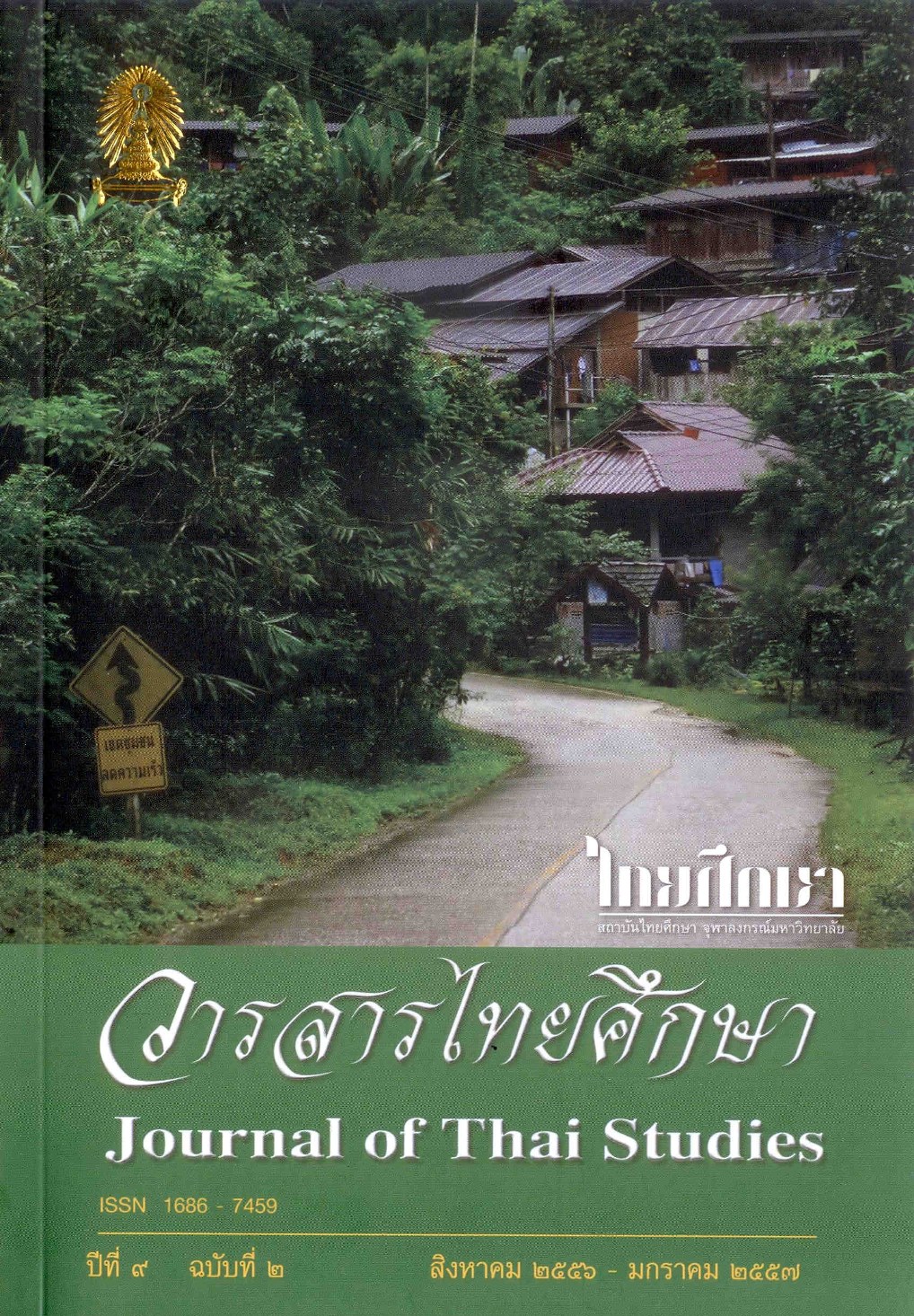Symbols of the Monastery Serfs of Wat Phra That Phanom in Khao Phichaphagaya Offering and Sia Kha Hua Ritual
Main Article Content
Abstract
Phra That Phanom, originally located on Doi Kapanakiri or Phu Kam Pra, is a spiritual center of the Mekong riverine people, located in That Phanom District of Nakorn Phanom Province. Annually, on the full moon of the third lunar month, the ritual of paying homage to Phra That Phanom is held. This paper aims to analyze the symbolization of the rites of the Khao Phichaphagaya offering and the Sia Kha Hua ritual to the Kha-okasa group (monastery serfs) of Wat Phra That Phanom and their existence in modern society.
It has been discovered that Khao Phichaphagaya refers to agricultural crops including rice, corn, bananas, and sugar cane, harvested from the monastery land, called a windmill field, donated to the monastery. On the 8th day of the 3rd lunar month, the monastery serfs offer Khan Mak Beng, and golden and silver flowers, symbolizing the contributions, of the five kings who constructed Phra That Phanom. In addition, they perform the Sia Kha Hua ritual (donations for maintaining the monastery). Terminated by the Proclamation of Slave Independence by King Rama V, the monastery serfs of Wat Phra That Phanom gradually disappeared from the monastery. However, even arnidst rapid social change, these inherited rites at Wat Phra That Phanom are annually performed. This study reflects the monastery serfs’ beliefs in Phra That Phanom in modern society.
Downloads
Article Details

This work is licensed under a Creative Commons Attribution-NonCommercial-NoDerivatives 4.0 International License.
Journal of Thai studies is licensed under a Creative Commons Attribution-Noncommercial-NoDerivatives4.0 Intenational (CC BY-NC-ND 4.0) licence, unless otherwise stated. Plese read our Policies page for more information on Open Access, copyright and permissions.
References
ทศพล อาจหาญ. ข้าโอกาสวัดพระธาตุพนม อำเภอธาตุพนม จังหวัดนครพนม, วิทยานิพนธ์ศิลปศาสตร์มหาบัณฑิต มหาวิทยาลัยมหาสารคาม, ๒๕๔๒.
ธวัช ปุณโณฑก. ศิลาจารึกอีสาน, กรุงเทพฯ : คุณพินอักษรกิจ, ๒๕๓๐.
ราชบัณฑิตยสถาน. พจนานุกรมฉบับราชบัณฑิตยสถาน พ.ศ. ๒๕๔๒, กรุงเทพฯ: นานมีบุ๊คส์ พับลิเคชั่นส์, ๒๕๔๖.
พจนีย์ เพ็งเปลี่ยน. นิทานอุรังคธาตุ ฉบับหลวงพระบาง, กรมส่งเสริมวัฒนธรรม: กระทรวงวัฒนธรรม, ๒๕๕๓.
พิเชษ สายพันธ์. นาคาคติอีสานลุ่มน้ำโขงชีวิตทางวัฒนธรรมจากพิธีกรรมร่วมสมัย วิทยานิพนธ์ปริญญามหาบัณฑิต, สาขามานุษยวิทยา มหาวิทยาลัยธรรมศาสตร์, ๒๕๓๙.
พระธรรมราชานุวัตร. อุรังคธาตุนิทาน ตำนานพระธาตุพนม (พิสดาร) พิมพ์ครั้งที่ ๑๑, กรุงเทพฯ : จูน พับลิชชิ่งจำกัด, ๒๕๕๑.
พิเศษ เจียจันทร์พงษ์. อุรังคธาตุ ตำนานพระธาตุพนม กรุงเทพฯ : เรือนแก้วการพิมพ์, ๒๕๒๓.
ศิลปากร, กรม. จารึกสมัยสุโขทัย. กรุงเทพฯ : กรมศิลปากร, ๒๕๓๒.
ศิลปากร, กรม. จดหมายเหตุการณ์บูรณะปฏิสังขรณ์องค์พระธาตุพนม, กรุงเทพฯ: โรงพิมพ์พระพิฆเนศ, ๒๕๒๒.
สุกัญญา สุจฉายา. “พิธีขอฝน” ในประคอง นิมมานเหมินทร์และคณะ. รายงานการวิจัยเรื่องวัฒนธรรมข้าวของชนชาติไท ภาพสะท้อนจากตำนาน นิทาน เพลง งานวิจัยเงินทุนจุฬาลงกรณ์มหาวิทยาลัยเฉลิมฉลองสมเด็จพระเทพรัตนราชสุดาฯ สยามบรมราชกุมารี, ๒๕๔๔.
สุริยา สุทรคุปติ์. สัญลักษณ์สำคัญในบุญบั้งไฟ การวิเคราะห์และตีความหมายทางมานุษยวิทยา ขอนแก่น: มหาวิทยาลัยขอนแก่น, ๒๕๓๓.
สมชาติ มณีโชติ. พระธาตุพนม: ศาสนสถานศักดิ์สิทธิ์ในมิติด้านสัญลักษณ์ทางสังคมวัฒนธรรม, วิทยานิพนธ์ปรัชญาดุษฎีบัณฑิต มหาวิทยาลัยมหาสารคาม, ๒๕๕๔.
เอเจียน แอมอนิเย. บันทึกการเดินทางในลาวภาคหนึ่ง พ.ศ. ๒๔๓๘. แปลโดยทองสมุทร โดเรและสมหมาย เปรมจิตต์ เชียงใหม่ : สถาบันวิจัยสังคม มหาวิทยาลัยเชียงใหม่, ๒๕๓๙.
อคิน รพีพัฒน์. วัฒนธรรมคือความหมาย ทฤษฎีและวิธีการของคลิฟฟอร์ดเกียร์ซ, กรุงเทพฯ: ศูนย์มานุษยวิทยาสิรินธร (องค์การมหาชน), ๒๕๕๑.


